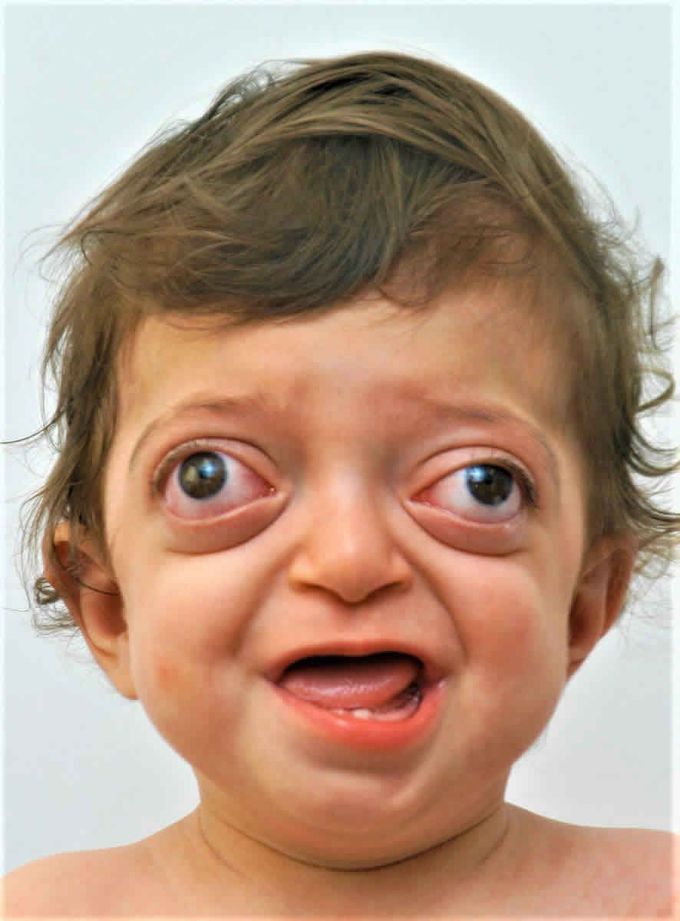


Crouzon Syndrome
Crouzon syndrome is a rare genetic disorder. It's a type of craniosynostosis, a condition in which the fibrous joints (sutures) between specific bones of the skull fuse prematurely. Sutures allow an infant's head to stretch and grow. These bones later fuse together to form the skull. The sutures fuse prematurely in Crouzon syndrome, impacting the correct growth of the skull and head, as well as the shape and development of the skull. It's also possible that certain facial bones will be damaged. When comparing one infant to another, the severity of craniosynostosis might vary greatly. Face and head abnormalities are the most common symptoms. In most cases, intelligence is unaffected. Crouzon syndrome is inherited in an autosomal dominant way and is caused by mutations in one of the FGFR genes, generally FGFR2.
In Apert Syndrome, the orbit has less marked proptosis plus mild hypertelorism in contrast to Crouzon Syndrome which has marked hypertelorism with optic nerve being commonly compressed.

